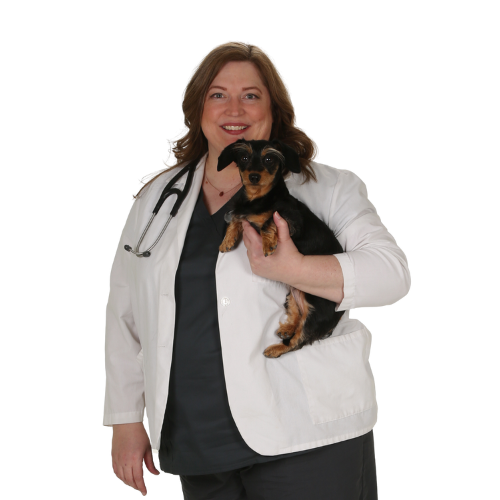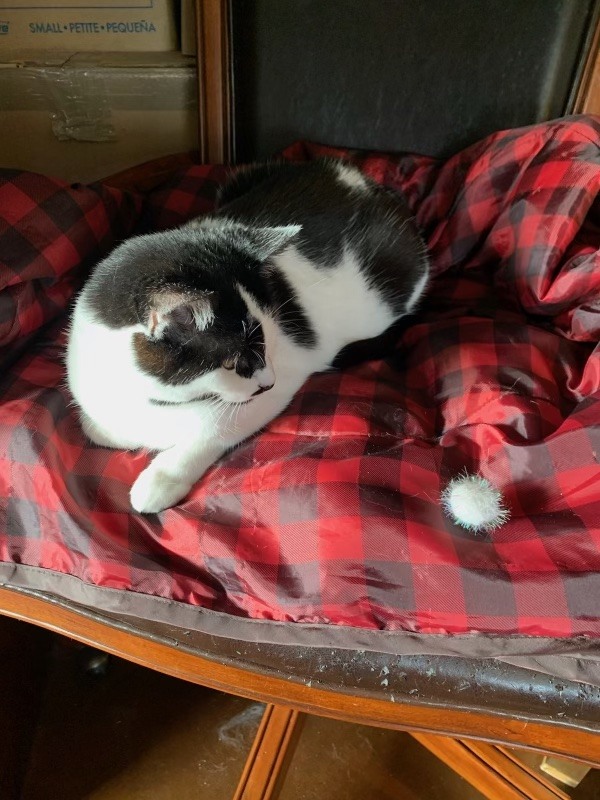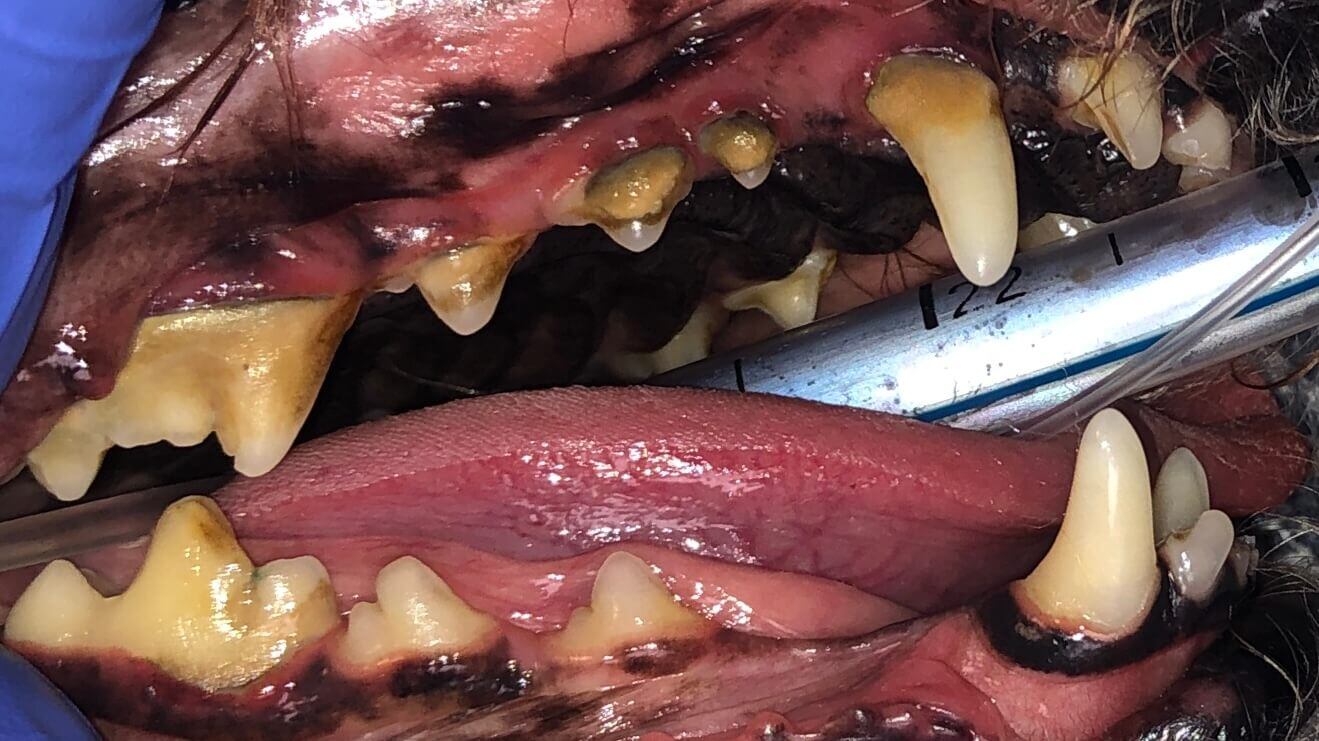1 min read
Complicated Dental Fractures: The Benefits of Root Canal Therapy
Case Summary: In this case study, we delve into the intricate treatment of a complicated crown fracture in a canine tooth, where the pulp is exposed,...
3 min read
 Jennifer Mathis, DVM, DAVDC, CVPP
:
Dec 2, 2024 8:00:00 AM
Jennifer Mathis, DVM, DAVDC, CVPP
:
Dec 2, 2024 8:00:00 AM

Stomatitis is a painful condition characterized by widespread inflammation of the mouth's mucous lining, often linked to immune system irregularities. This condition typically presents with ulcerated, delicate gums extending into the caudal (rear) area of the mouth. True feline chronic gingivostomatitis (FCGS), or stomatitis, always involves inflammation in the caudal mouth and is frequently associated with tooth resorption and periodontal disease. Despite extensive research, no single causative agent has been identified for FCGS. The evidence suggests it is immune-system-dependent and multifactorial, explaining why some cats develop FCGS while others in the same environment remain unaffected.
Full mouth extractions (FME) are necessary for ALL cases with caudal mouth inflammation. Studies indicate that 67-90% of cats respond favorably to FME, with the remaining cases requiring lifelong medical management. Medical treatment is recommended alongside surgery for up to a year in responsive cats but is not a replacement for surgery. Outcomes improve significantly when FME is performed as an initial treatment and early in the disease course. Cats managed medically for extended periods before undergoing FME are less likely to achieve a curative outcome.
This case study will explore why this seemingly aggressive treatment (full mouth extractions) is necessary for all FCGS cases, no matter their stage in the condition.
Kiki, a 3-year-old spayed female domestic shorthair cat (FS DSH), presented to a local emergency veterinary clinic due to signs of pain while eating. Her owner reported that Kiki showed interest in food but would yelp or growl when attempting to eat, indicating discomfort. Following a comprehensive examination, the likely diagnosis was early-stage or mild Feline Chronic Gingivostomatitis (FCGS), as other diagnostic workups returned normal results. Mild redness was observed at the caudal (rear) portion of her mouth, consistent with early FCGS symptoms.
Kiki’s oral inflammation responded to steroids; however, her owner preferred a treatment plan that did not rely on long-term steroid use. For specialized care, Kiki was referred to Animal Dentistry Referral Services for further evaluation and management options.
Caudal Mouth Inflammation: Mild inflammation observed in the left caudal mouth area, particularly around the maxillary left molar. The right caudal mouth showed little to no inflammation.
Gingival Condition: Reddened gingival margins were present around all cheek teeth posterior to the canines.
Tooth Resorption: Type 1 tooth resorption (inflammatory or "eggshell" type) noted on tooth 307.
Crown Fracture: Uncomplicated crown fracture (T/FX/UCF) on tooth 104.
Diagnostic Considerations: Although Feline Chronic Gingivostomatitis (FCGS) is a potential diagnosis, the distribution of caudal mouth inflammation does not strongly support it. Severe periodontal disease is likely contributing to these findings but does not currently necessitate full-mouth extractions.
Below: 3D Hard Tissue: (left and right)


Below: 3D X-ray Images that Can Detect Replacement Resorption (left and right)


The initial treatment plan for Kiki was conservative, as her FCGS presentation was mild, with minimal to no caudal mouth inflammation at the time. The potential lack of caudal mouth inflammation—observed while she was on steroids—suggested that extraction of all teeth behind the canines might be sufficient.
In December 2022, at Animal Dentistry Referral Services, caudal mouth (CME) and incisor extractions were performed, leaving only the canines intact. The plan included annual comprehensive oral health assessment and treatment (COHAT) to monitor for any progression of her condition.
However, despite the mild initial presentation, CME alone was insufficient. Currently, the only definitive treatment for FCGS is full-mouth extractions, with most cases requiring concurrent medical management, and some requiring lifelong medication even after full extractions. Due to recurring redness and ulceration in the caudal mouth, Kiki returned in February 2023 for the extraction of her remaining teeth.
Below: Initial Presentation of Caudal Mouth

Below: Before (CME) Caudal Mouth Extractions (left and right)


Below: Caudal Mouth Presentation

Below: 3D Hard Tissue (left and right)


Below: Before Extractions (left and right)


Below: After Extractions (left and right)


Since Kiki’s full-mouth extractions in February 2023, she has been under ongoing medical management with Animal Dentistry Referral Services for FCGS. We’ve seen her regularly for progress evaluations and medication adjustments. Kiki is now on a low-dose, less-than-daily prednisolone regimen and has successfully weaned off the additional multimodal pain management medications initially required.
 While her condition has not fully resolved, Kiki falls within the ~10% of FCGS patients requiring lifelong management for what is suspected to be an immune-mediated condition. Despite this, Kiki is thriving at home! Her mom, Kirsten, recently shared that Kiki is more energetic and playful than ever, frequently batting her favorite little white cat ball around the house during interactive play sessions. Kirsten reports that she hasn’t seen this level of spontaneous play from Kiki in years. Her lab results continue to be within normal limits, and her quality of life has dramatically improved since her first visit with us. We’re always delighted to receive such positive updates from Kiki and Kirsten!
While her condition has not fully resolved, Kiki falls within the ~10% of FCGS patients requiring lifelong management for what is suspected to be an immune-mediated condition. Despite this, Kiki is thriving at home! Her mom, Kirsten, recently shared that Kiki is more energetic and playful than ever, frequently batting her favorite little white cat ball around the house during interactive play sessions. Kirsten reports that she hasn’t seen this level of spontaneous play from Kiki in years. Her lab results continue to be within normal limits, and her quality of life has dramatically improved since her first visit with us. We’re always delighted to receive such positive updates from Kiki and Kirsten!
In summary: While not every FCGS case achieves full resolution, most patients can reach a stable, comfortable condition with:
%20Case%202%20-%20July%202024/Henry.jpeg)
1 min read
Case Summary: In this case study, we delve into the intricate treatment of a complicated crown fracture in a canine tooth, where the pulp is exposed,...
%20-%20August%202024/3D%20image%20of%20open%20pulp%20chamber.jpg)
1 min read
Case Summary: In this case study, we examine a canine tooth that has been worn down to the pulp, leading to a painful exposure that allows bacteria...

1 min read
Case Summary: Guided Tissue Regeneration (GTR) is a technique used to promote the regeneration of bone and soft tissue, enabling the replacement of...